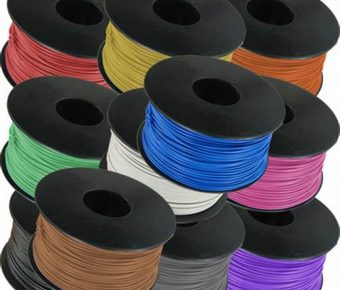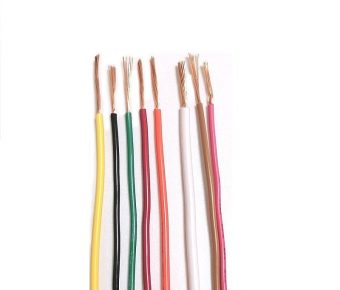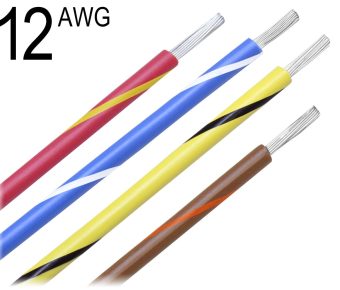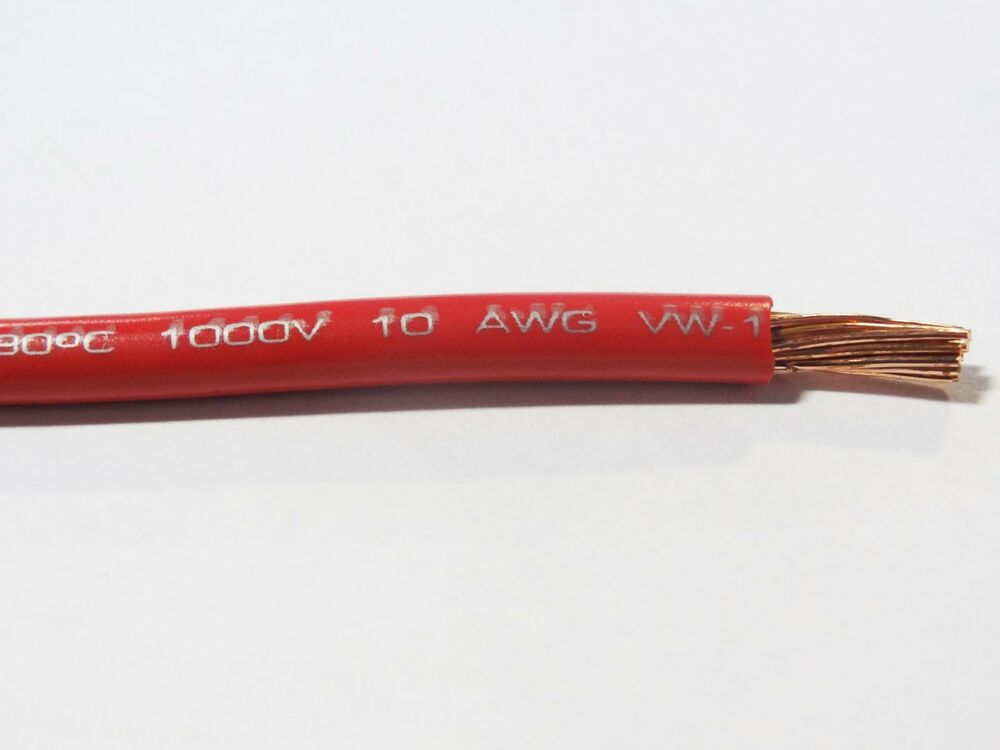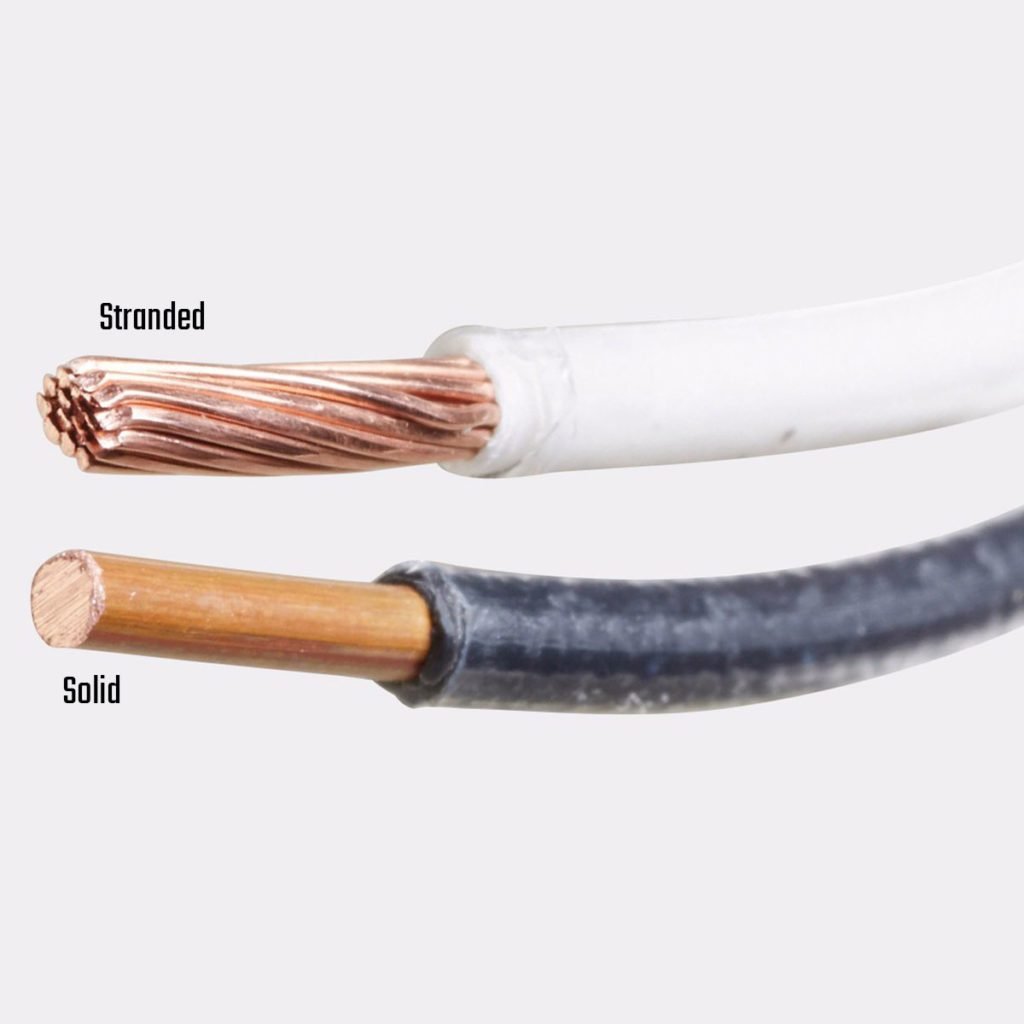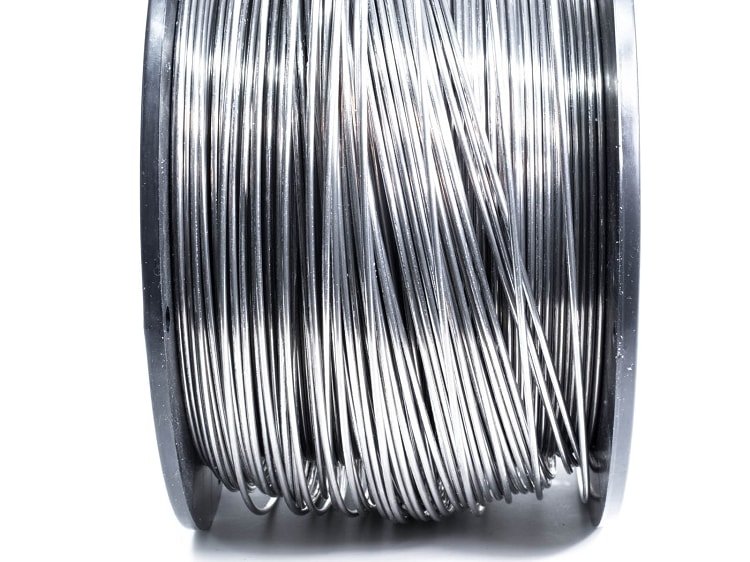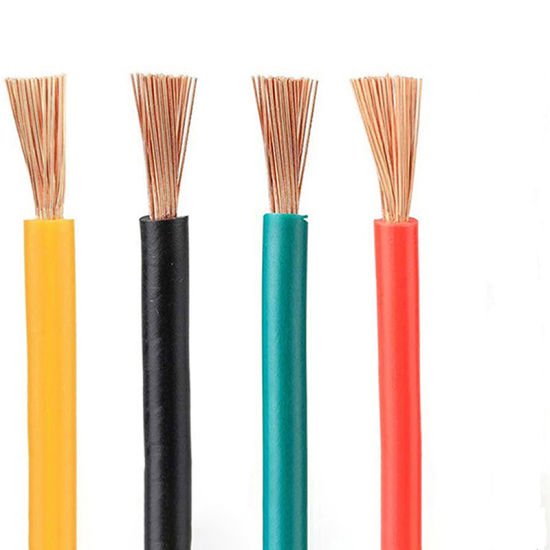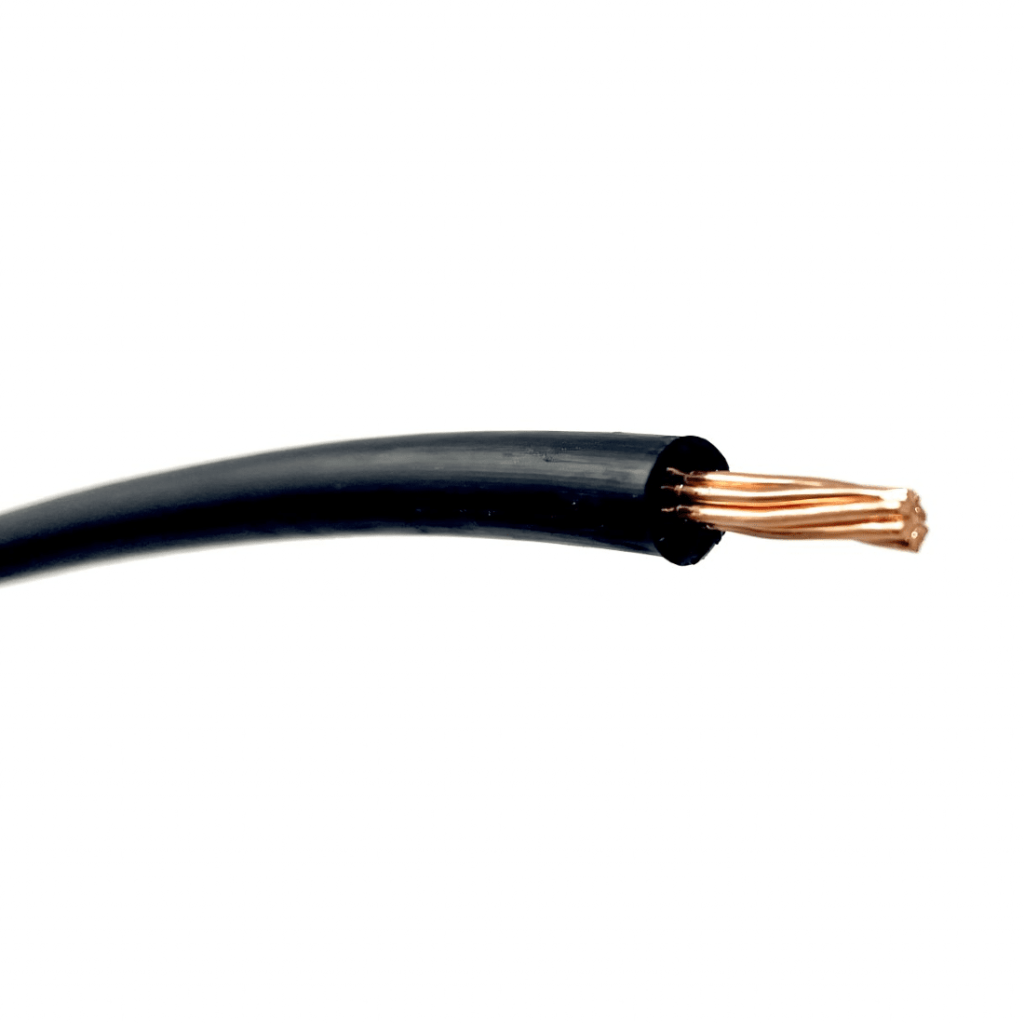- Leading Cable and Wire Manufacturer-ZW
- 10 Gauge Wire
10 Gauge Wire
- According to IEC 60092 Standard
- Flame Retardant & PVC Cable
- Approved by GB,CCC,IEC,SGS
- Large stock cables with different colours
Image 1: 10 Gauge AWG Copper Wire
While distinct wires focus on different aspects, understanding the appropriate 10-gauge wire is essential. The measurements are used to evaluate how much current can safely run via the cable without causing harm. Furthermore, each wire gauge width has a safe Ampacity, which is an electrical charge indicator.
1. What Size is 10 Gauge Wire?
The thickness of a cable or wire is defined by its gauge size. The general rule is that the smaller the gauge size, the wider the line. The cross-sectional area is essential to consider when assessing its current-carrying capacity. The diameter of the cable will not include the outside coat of the wire, but only the electrical cables inside too.
10 Gauge Solid vs. 10 Gauge Stranded
10 Gauge wire solid is the most frequent type of wiring used in construction and construction projects. It can also be employed in electronics when you get down to the tiniest gauge sizes. 10 gauge Stranded wire, on the other hand, is the most prevalent type of wire used in automotive applications, 10 gauge wire, among other wire gauges, is a stranded choice. The different forms of stranded wire available range in gauge from 18 to 8, depending on the type.
10 Gauge Thhn Wire
This 10 gauge cable has PVC insulation and a nylon sheath. Thermodynamic stability, surface strength, high mechanical strength, heat resistance, abrasion resistance, tensile strength, chemical resistance, and other properties distinguish 10 AWG thhn wire. Solid wire with a diameter of 10 thhn is 1/2.59mm. The diameter of 10 gauge stranded wire is 19/0.58mm.
10 Gauge Outdoor Wire
Shielding against moisture and corrosion, preventing physical damage, and dealing with issues connected to underground burial are the primary safety considerations with outdoor wiring. The essential code requirements for most home outdoor wiring projects pertain to installing outside receptacles and lighting fixtures and running wire above and below ground. Landscape wiring or electrical cable is available in various number gauges or diameters. A lower number indicates that the wire is thicker and has a larger capacity to transmit the electric current over longer distances.
Landscape lighting commonly uses 10-, 12-, 14-, or 16-gauge cables. For lengthy distances, we prefer 10-gauge outdoor wire. As you travel further away from the transformer and its power supply, the circuit becomes more resistant, lowering the voltage.
Image 2:10 Gauge Aluminium Wire
Copper is the most conducting metal, yet it is also the heaviest and costliest. The aluminum cable can work thus for high-voltage, long-distance high voltage applications. It’s an excellent electrical conductor that demands a thicker diameter than copper wire, but it’s more lightweight and less costly. Aluminum wire is used instead of copper in transmission lines.
10 Gauge Ground Wire
Subterranean feeder and underground service entries (USE) are the most frequently utilized straightforward subterranean wires for domestic use. The UF cable is typically gray in color and exists in reels comparable to non-metallic (NM) encased wires. The important distinction is that the UF cable is designed for outdoor use, whilst regular NM cables are designed for interior use.
To transmit power from the utility station (electrical grid) to the house, the USE cable is dark and usually buried underground. USE cables are typically not handled by a homeowner or an average commercial electrician since they demand a great amount of knowledge.
If the wire system breaks down, electrical grounded serves as a second conduit that permits current to flow down into the ground. It will enable a physical connection between the earth and your home power devices. The metal works as a ground plane between both the power cords and the services panel if wire electrical wires are used in wire installations. The 10-gauge ground wire provides a direct low – resistance path. The ground operates as a route of low resistance, making it impossible for an object or a person to be the shortest route. If the electrical grid is rooted, all excess power will sink into the ground rather than burning the attached gadgets.
10 Gauge automotive wire
Image 3: 10 gauge automotive wire
The permissible voltage drops, length of the feeder/branch circuit conductors, load amps, and air temperature of the compartment where the primary wire will travel through are all factors to consider while selecting the appropriate gauge automobile wire. The ambient temperature should be around 20°C outside the engine compartments. When wires pass via (or originate from) engine compartments, set the ambient temperature higher. Larger wires apply for longer lengths, higher currents, and higher temperatures.
Automotive electric, RV, off-road, solar, maritime and other low-voltage DC power devices use 10-gauge automotive cable. Red, blue, black, green, yellow, white, orange, brown, purple, and pink are all just a few of the colors available for vehicle wire. The wire covers PVC insulation that can withstand temperatures up to 176°F (80°C) and is resistant to abrasion, grease, oil, and acids prevalent in an automotive environment. 10 gauge wire is more durable and heat resistant than general-purpose PVC wire by up to 20%.
2. In mm, how big is 10 gauge cables?
The thinner the copper, the lower the number. As a result, 10-gauge solid copper wire is thicker than 16 gauge. It means a 10-gauge wire diameter is more significant than the others. Then there’s the question of how much broader? 16gauge copper has a diameter of.065″ inches, or roughly 1/16th of an inches. For example, 14 gauge is.083 inches wide, that might not appear to be much, yet it is around 30% larger than 12 gauge (27.6 percent exactly).
Thirty percent is thicker, thirty percent stronger, and thirty percent better. Is the panel’s cost approximately 30% greater? Probably 10-gauge copper wire price is higher. Is it truly worthwhile? 10 gauge wire size is rough.120 wall thickness (up to.135 wall thickness depending on who you ask) This means that 10-gauge copper is 84% greater than 16 gauge and 44% thicker than 14 Ga. As a result, 10 gauge wire is far more potent than either of the other panels.
3. How Much Current Can A 10 Gauge Wire Hold?
The conductor is rated at 30 amps in 10-gauge. The resistivity of 10-gauge electric cable is roughly 1 ohm per 1000 meters in average. The rating is controlled by the quantity of warmth which the insulator can withstand. Insulated wire with NEC ratings of 60, 75, and 90 degrees Celsius is rated for 30, 35, and 40 amps, respectively.
Is it feasible to use a 20-amp switch with copper cable that is 10-gauge? With a 20-amp breaker, you can utilize 10 AWG power cables. Copper cables of 12 AWG are the tiniest size which can be used with a 20 amp break. Other than the cost and challenges of operating with wider wires, there are no disadvantages to using more conspicuous copper wires.
Then again, what is the 10 gauge wire designed for? The National Electrical Code prohibits size10 electrical wire for most uses if you’re only talking about a standard number 10 gauge wire used in building wiring. Under most usual circumstances, this value is a conservative estimate for safety.
4. 10 Gauge Wire Thickness
The gauge of a wire relates to its width. Every gauge is given a value. Smaller values suggest larger wire gauges and higher numbers indicate smaller wire gauges. The American Wire Gauge (AWG) is a standard method for measuring and specifying cable width for highly conductive wire that was developed in the United States. It can be used to define gauge for the round and solid non-ferrous material carrying wires.
Because the diameter of a wire affects its electronic characteristics, it helps industry leaders to quickly and easily determine if it is appropriate for a given purpose (e.g., resistivity and because the diameter of a wire affects its electronic characteristics, it helps industry leaders to quickly and easily determine if it is appropriate for a given purpose (e.g., resistivity and the 10 gauge wire is 3.36Ω/KM and a thickness of 2.558826mm.
5. How Much Does A Foot Of 10 Gauge Wire Cost?
Manufacturers are under a lot of pressure to compete. Quality and pricing are increasingly determining whether a company succeeds or fails in the marketplace. Based on LME copper, the price of 10 gauge wire is USD 0.43/M. If the price of copper continues to rise, the price will still rise. If the price of copper falls, the price will fall
4. What length cable would I need for 30 amps?
Any circuit fused for 30 amps need to use a total of 10-gauge copper. Longer lengths may necessitate changing the wire length. Use at least 10 copper in your case, irrespective of just how far off your burner is from the breaker box.
5. Should I use 10 gauge wire on a 20 amp loop?
Image 4:10 AWG Copper Cable
Yes, you can use10 AWG copper wires with a 20 amp breaker. 12 AWG copper conductors are the smallest can be used with a 20 amp breaker.10 gauge wire works even better. There are no drawbacks to employing more prominent conductors other than the cost and challenges of working with thick conductors.
6. Where to Buy 10 Gauge Wire?
ZW Cable, a leading manufacturer of electrical wire, is the best option for you.
As you can see, there’s a lot to consider when selecting and using the correct house electrical wire for the job. Not only is an appropriate technique required to wire a home for electricity, but the project’s success is also contingent on your selection of the appropriate hook-up wire. It would help if you had the correct electrical cable from a wire manufacturer like ZW Cable with so much on the line. You’ll not only get the appropriate product for the proper application, but you’ll also get the best 10 gauge wire price around. Guaranteed!

